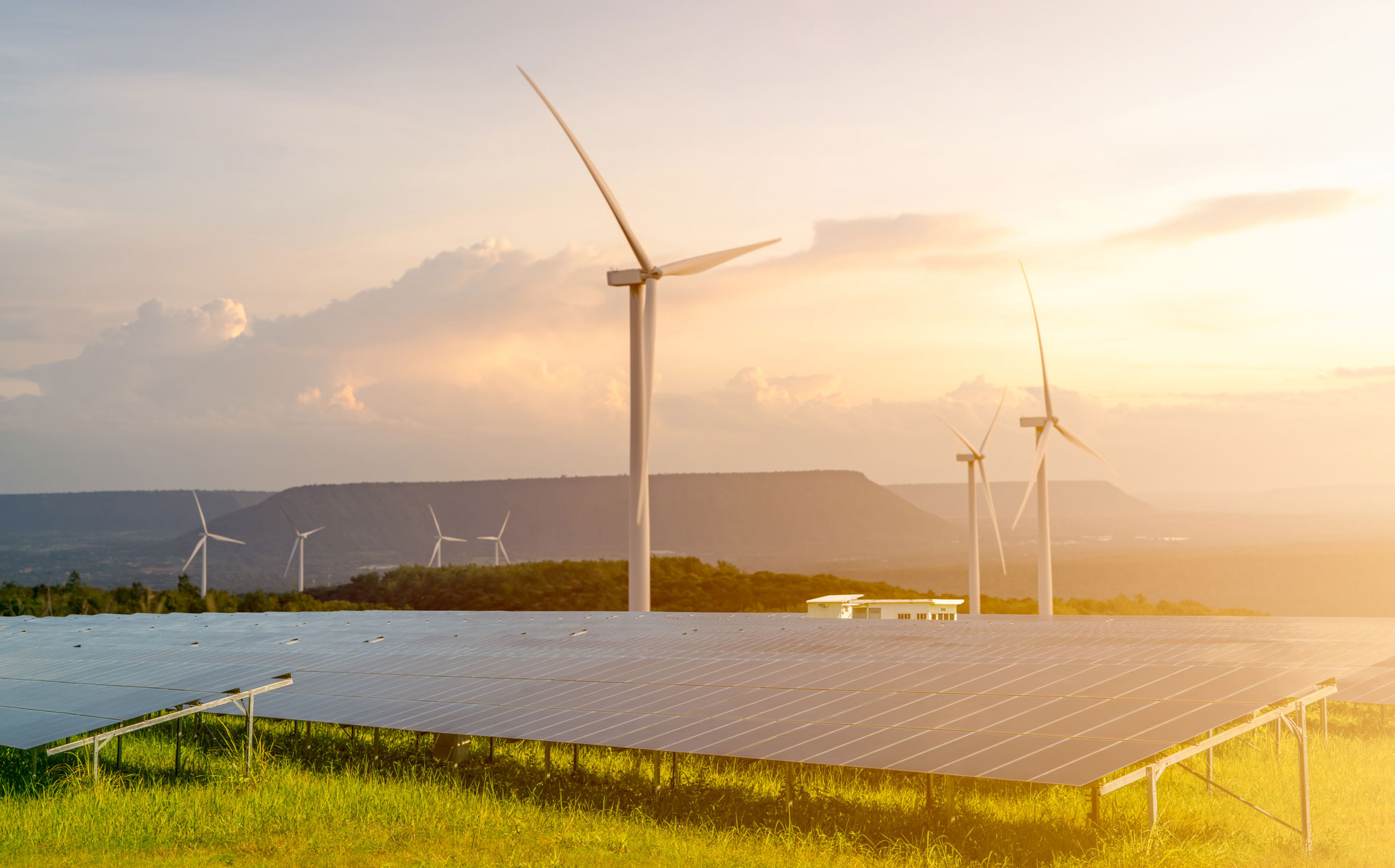Cutting carbon emissions is at the top of many business’ agendas. Investing in renewable energy solutions is a great way to reduce your business’ carbon footprint – not only does it help the planet, but it can also reduce your energy bills. With energy costs soaring, there’s never been a better time to invest.
There is an ever-growing range of renewable energy sources you can install. Here are some of the best types of renewable energy to help your business become carbon neutral.
Solar energy
Solar energy is one of the most popular choices for businesses, and is suitable for most types of premises. There are two types of solar energy you can invest in: solar panels and thermal energy.
Solar panels are made from photovoltaic (PV) cells that convert the sun’s energy into electricity. They can be installed on the roof or sides of your building, or as a solar farm if you have land to spare.
Previously, solar panels had a lengthy payback time, but with the cost of energy at an all-time high, you’ll recuperate your investment in savings in a matter of years.
Solar thermal energy
Solar thermal panels collect a different kind of energy from the sun to heat water in your business premises. Absorbing heat energy from the sun, solar thermal panels store this energy in solar collectors and use it to heat water, which then is stored in your hot water tank.
Like solar PV panels, solar thermal panels can be installed on the roof and sides of your building, as well as the ground. They work best when they are south facing.
Wind energy
If you have a surplus of land to put to use, wind energy is a great option. Wind turbines can generate huge amounts of electricity. When the wind blows, it turns the blades on the turbine, powering a generator to produce electricity.
There are two main types of wind turbine: free-standing and building-mounted. Free-standing turbines are larger and generate far more electricity, but if your business is in an urban location, building-mounted turbines are a viable option.
Currently, wind turbines currently have an average lifespan of 25 years, but as technology advances, their lifespan is increasing.
Hydroelectricity
If your business is located near a river or stream, you could harness the power of water to generate green electricity. Like wind turbines, the water current powers a turbine which drive a generator to produce power.
The fuller the river and the faster the flow, the more power will be generated.
Tidal energy
Wave and tidal energy are forms of hydropower with great potential for the UK. As an island with the most wind in Europe, we have strong tidal currents that can power turbines to generate a huge amount of electricity.
Biomass energy
If your business produces excess organic material, such as plant waste, wood or green food waste, you can install a biomass energy system. Biomass can be burned to produce energy, converted in biofuel, or fermented to produce energy.
Biomass energy can also help your business reduce waste by utilising biproducts that would otherwise be disposed of.
Anaerobic digestion
Like biomass energy, anaerobic digestion uses waste plant matter to generate electricity. Plant and animal waste is loaded into the anaerobic digestion plant to ferment, and then the methane produced is burned to generate power.
This is a suitable option is you have plenty of land to build a plant on and plenty of waste to fuel it.
Energy from waste
Energy from waste is a semi-renewable form of power. Most commonly, residual waste is incinerated to produce heat or electricity. It’s important to note that combustion also produces emissions, so it’s not a fully green form of power generation.
Waste can also be used to produce a synthesised gas – the basis of other useful products, including fertiliser – or turned into electricity.
Clegg Associates work with businesses of all natures to plan and build renewable energy systems. Contact our team today to discuss your requirements.
